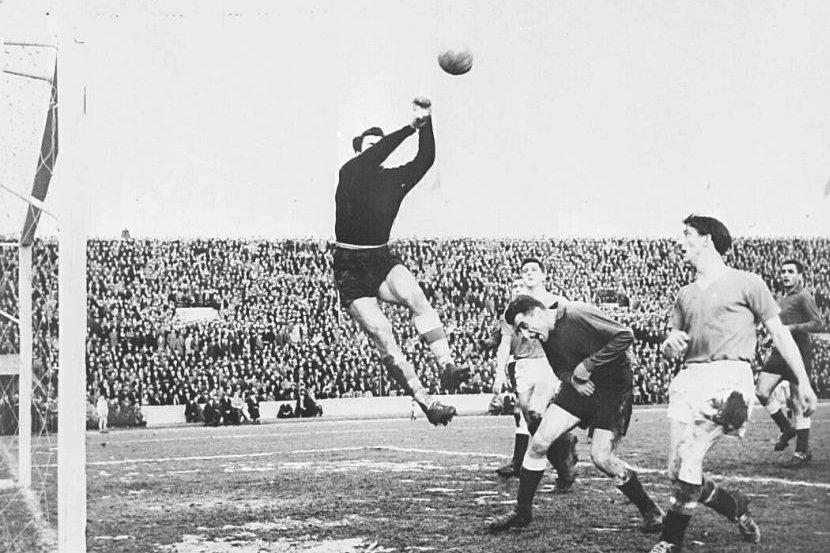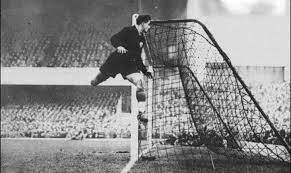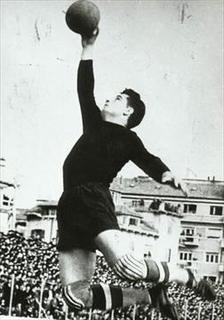
Vladimir Beara, often called “The Ballet Dancer with the Hands of Steel”, is considered one of the most technically gifted and elegant goalkeepers of the 20th century. He represented both Yugoslavia and later Croatia, and he combined acrobatic artistry with reliability, making him one of the greatest keepers of his era.
🏆 1. Career & Achievements
- Club Career
- Played for Hajduk Split, where he won 3 Yugoslav league titles (1950, 1952, 1955).
- Later joined Red Star Belgrade, winning 4 more league titles and 3 Yugoslav Cups.
- Moved abroad to play for Alemannia Aachen (Germany), which was unusual for players from Eastern Europe at the time.
- International Career (Yugoslavia)
- Earned 59 caps (1950–1959).
- Played at 3 World Cups (1950, 1954, 1958).
- Won a silver medal at the 1952 Helsinki Olympics.
- Key part of the side that reached the 1953 Central European International Cup final.
- Recognition
- Frequently ranked among the top goalkeepers in the world during the 1950s.
- Lev Yashin himself, widely considered the greatest goalkeeper of all time, once said:
“There was only one goalkeeper better than me — Vladimir Beara.”

🧤 2. What Made Him Stand Out
- Grace & Agility
Beara trained as a ballet dancer in his youth, which gave him unmatched flexibility, balance, and fluidity in his movements. His dives were both technically perfect and spectacular to watch. - Safe Hands
His nickname “Hands of Steel” came from his ability to hold onto the ball securely, even from powerful shots in an era when goalkeepers often just parried. - Consistency
He was reliable in big matches and performed at a world-class level for nearly a decade, even against the toughest opponents. - Charismatic Personality
Beara exuded confidence, which inspired trust in his defenders and unsettled opponents.
🔬 3. Innovations & Contributions
- Artistry Meets Goalkeeping
- Beara brought a new aesthetic to goalkeeping, combining technical shot-stopping with the elegance of ballet-like movement.
- His style influenced how goalkeepers approached agility and body control in training.
- Ball Handling & Catching
- At a time when many keepers punched or deflected shots, Beara was known for catching and holding the ball cleanly.
- This emphasis on secure handling set new standards for the position.
- Modern Training Approach
- Beara was among the first goalkeepers to emphasize specialized training drills, using flexibility and footwork exercises inspired by dance.
- This was a precursor to the highly specialized keeper training methods of today.
- International Pioneer
- By moving abroad later in his career (to West Germany), he became one of the first Eastern European keepers to export his style, influencing younger generations outside Yugoslavia.

🌍 4. Cultural & Historical Impact
- National Icon
Beara remains a beloved figure in both Croatian and Yugoslav football history, remembered for his artistry and contributions to Hajduk Split and Red Star Belgrade. - Respected by Peers
Praise from Lev Yashin cemented his place among the all-time greats. Few keepers have ever been recognized by their rivals as “the best.” - Lasting Legacy
He is seen as a bridge between the “classical” goalkeeper style of the pre-war era and the more modern, athletic approach of the post-war greats like Yashin, Banks, and Zoff.
✅ In summary: Vladimir Beara is one of the greatest goalkeepers because he combined artistry, athleticism, and technical excellence in a way no one had seen before. His ballet-trained agility, unmatched handling, and pioneering training methods helped redefine the standards of goalkeeping. More than just a shot-stopper, he turned goalkeeping into a craft of elegance and reliability, leaving a legacy admired even by his greatest rival, Lev Yashin.
Goalkeeper Glove Care
Extend your gloves’ lifespan and restore grip with KEEPER BALM. Trusted by goalkeepers worldwide.
It keeps goalkeeper gloves gripping like new, forever.